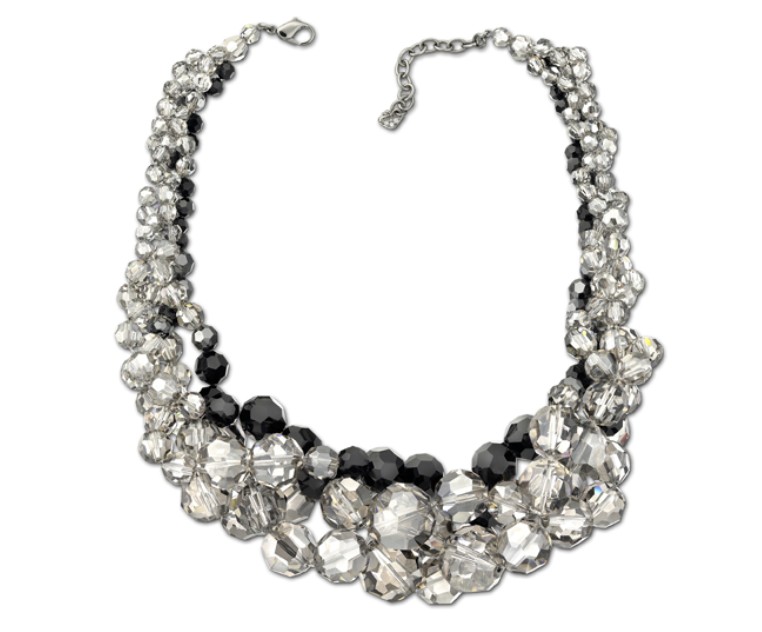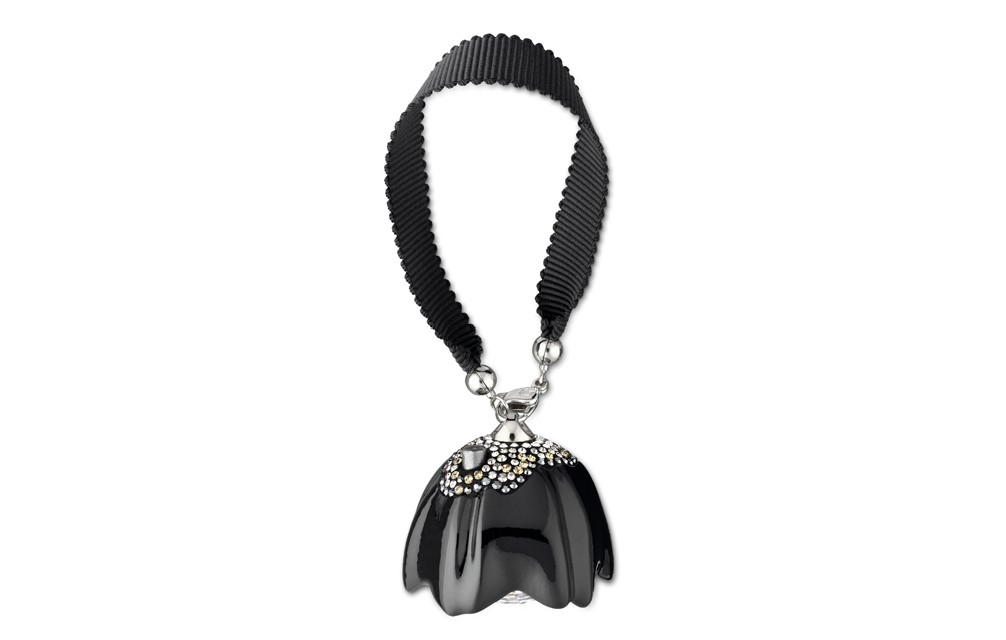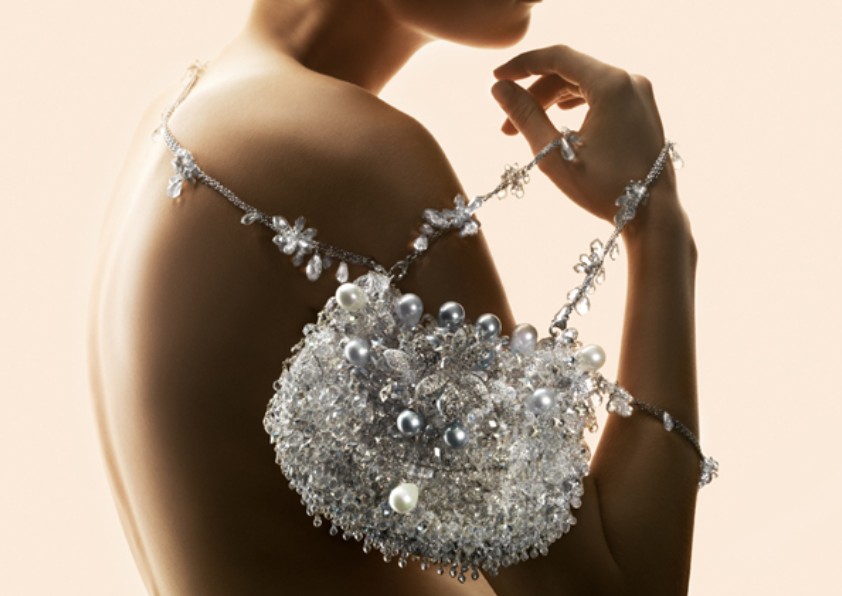
The Austrian firm’s creative director explains how her professional focus on her ‘dreams’ over ‘ambition’ got her where she is today
Nathalie Colin, creative director of Swarovski, has always had a natural flair for fashion and design.
Growing up she was an insatiable doodler, endlessly scribbling on every piece of paper she could find, including the figures in the fashion mail order catalogues collected by her grandmother, which Colin would accessorise with glasses, handbags and scarves. By the time she was seven she was designing and sewing clothes for her dolls and had become enamored with the colours and prints of the fabric samples brought home by her father, who was an employee of a large textile group. These sumptuous fabrics were among her first recollections of luxury.
When reminiscing about her earliest experience working in fashion, alongside Marc Jacobs at Perry Ellis, it is also the textiles which seem to have most fascinated her: “I remember the particular hand of some couture fabrics and of a silk knit jumper that I can still feel today as if it was yesterday.” A love of material qualities is apparently inherent in Colin who admits that “crystal probably chose me as much as I chose it.”
After studying marketing at the French business school Ecole Supérieure de Commerce (ICN) in France and fashion at New York’s Fashion Institute of Technology (FIT), in 1989 Colin moved to Paris to work for the Promostyl agency where she extended the company’s activities in a variety of areas which ranged from ready-to-wear fashion to accessories, costume jewellery, cosmetics and sports products.

The Maniac necklace, AW 2010-11 collection
By the year 2000, Colin had founded Cultural Sushi, a brand and design strategy consultancy agency, inspired by the cross-cultural approach to fashion, which had been fostered in her at FIT. After six years, she left the agency to join Swarovski as creative director, “convinced by the extraordinary creative potential of crystal”. Colin had been involved with the brand on a trends and early product development consulting basis since 1994.
Swarovski’s values of accessibility, respectful management and friendly professional team-work are what appealed to Colin, she says. But she also tries to plug four new key concepts in the Swarovski culture: a nomadic spirit which Colin believes sums up the current zeitgeist; modern approaches to faceting and interpreting crystal; a sense of humour in design and ‘the iconic signature’, with repetitive design details such as the Swanflower™ pattern. Her belief in the versatility of Swarovski crystal in multiple industries – from electronics to apparel or even automotives – is also central to the direction of Colin’s product design. For this self-described dreamer, innovation and tradition go hand in hand – not least because when the company’s founder Daniel Swarovski began, his primary focus was indeed innovation.

The light-up bag charm, from the active crystals high-tech objects collection
“At that period of time, it required a visionary strategy and ‘out of the box’ thinking to found this company, in the middle of Tyrol, and to understand at a very early stage, that innovation was key, and that networking and collaborating with artists and designers – like Christian Dior, Coco Chanel and Elsa Schiaparelli – was crucial to bring in fresh ideas to the business.”
Colin believes that having a team with a diverse range of educational backgrounds including anything from art history to graphic design or animation and an equally diverse group of nationalities is crucial to Swarovski’s success. What she says they share is openness and a vital understanding of femininity. “Swarovski is above all a feminine brand,” she’s quick to remind you – even if Swarovski have just launched a men’s collection which promises to give the brand scope to move in a new direction.

The Opus bag, from last year’s 20th anniversary collection
When it comes to the direction of luxury more generally, Colin believes that in a “new era” luxury is about rarity and refinement rather than ostentation and display. This longtime resident of Paris attests that special handmade or distinctive techniques like Swarovski’s pointiage method where hundreds of stones are hand placed to create a unique signature, are now more important than ever. “Luxury and exclusivity can match with functionality.” And like many others, she feels that the immaterial luxury of excellent service is as priceless now as always.
Turning her attention to the luxury consumer, Colin agrees that the age of the fashion diktat or the ‘total look’ is over and that they now crave versatility, freedom and personalization from their products. If you can achieve that flexibility and continue to create an emotional association with a product, luxury should keep its sparkle, she says.

